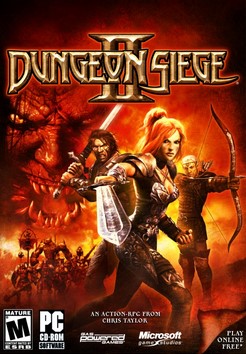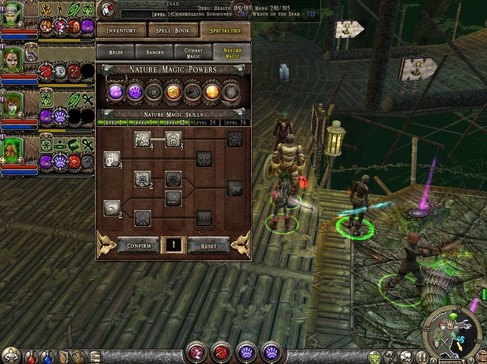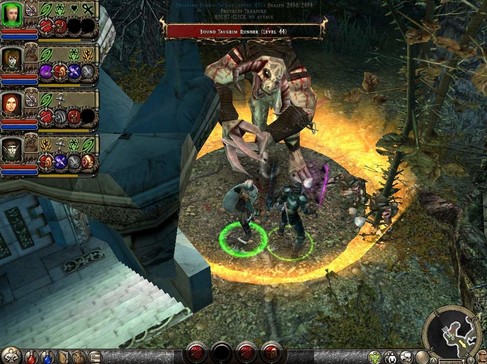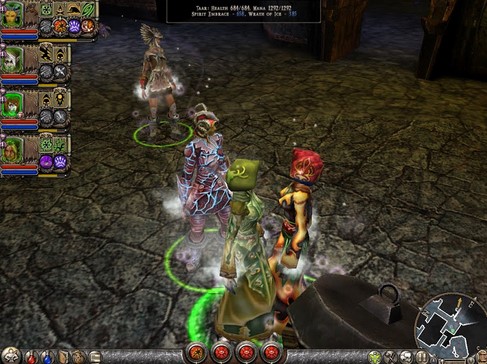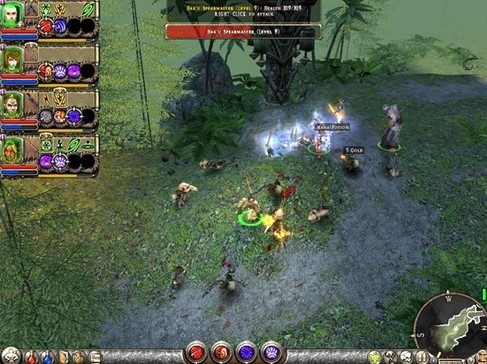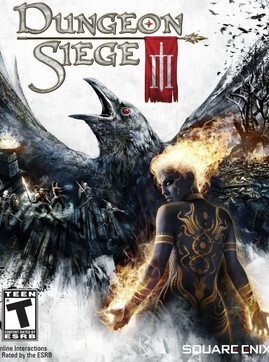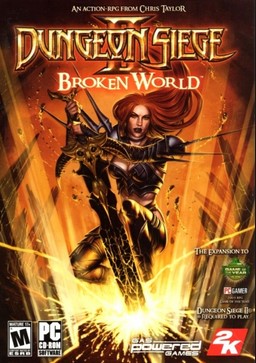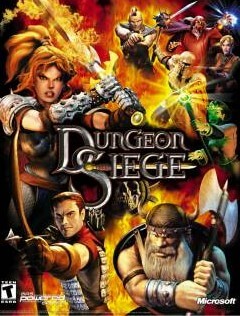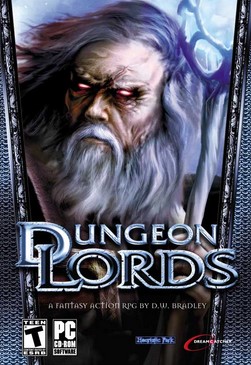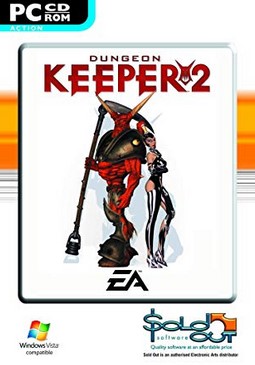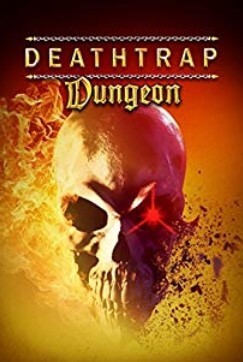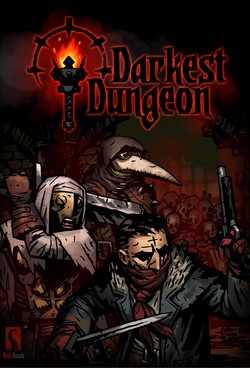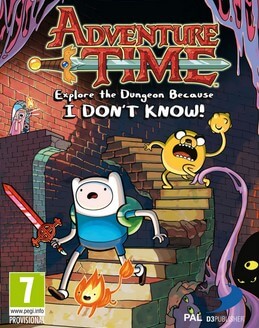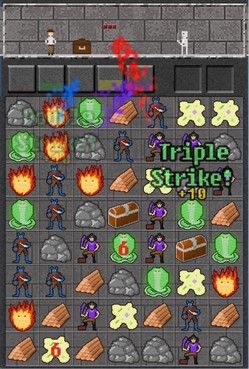In the original Dungeon Siege, the four character specialities (also known as classes) differed only in the items and spells they were allowed to use. In Dungeon Siege II, each speciality (Melee, Ranged, Nature Magic, Combat Magic) has a unique set of skills, that determines a character's particular strengths. For example, melee-oriented characters can get better at using a shield to defend their allies or they can improve their two-handed weapon skills to more effectively attack opponents. As in the original game, multi-classing (distributing experience and skills to more than one class) is possible, but it is best to do so with caution. A character learning skills in too many different areas may find themselves spread too thin and unable to perform any role effectively.
In the expansion pack for Dungeon Siege II, "Broken World", two new character classes have been introduced. These classes are multi-class characters: the Fist of Stone being a multi-class of Melee and Nature Magic, and the Blood Assassin being a multi-class of Ranged and Combat Magic. These new classes have been given their own specialised skill trees in addition to the others, allowing them to multiclass more easily without being at as much of a disadvantage. For example, the Fist of Stone is able to cause small earthquakes when attacking to keep up with the damage output of a pure melee character, and the Blood Assassin is able to cause targets to hemorrhage blood to keep up with the damage output of a pure ranged character (as they multi-class, they cannot upgrade their weaponry as often and would otherwise be weaker in combat).
Another change in Dungeon Siege II is the addition of the Hero Powers system. Powers are special abilities that characters can use when normal attacks do not suffice; they include abilities like invincibility for the entire party and the power to summon a lightning strike that damages all enemies in the area. They are acquired when certain skills are trained to a certain level. Each power has 3 levels, each requiring more skill points to get. Powers increase in potency as characters level.
Like its predecessor, Dungeon Siege II is a party-based role-playing game. Players can have up to four characters in a party under the first difficulty setting (Mercenary), five characters in Veteran difficulty, and six in Elite difficulty. Aside from being able to recruit non-player characters (NPCs) that function much like the player's own character, players can also buy pets that grow after being fed items. However, unlike its predecessor, the hirable NPCs have unique personalities and can converse with the player and each other at certain points in the game; they even have their own personal side quests. Pets start off with a basic attack (and spell if applicable), gain a Power upon reaching the third level of growth, and finally gain an emanation upon becoming Mature. Emanations are special pet-only auras that provide beneficial effects to friendly characters within range (such as increased mana regeneration).
The magic system in Dungeon Siege II remains largely unchanged. Combat Mages and Nature Mages still have access to separate spell lines that increase in power as the character levels. However, combat and nature magic are much more distinct from each other than in Dungeon Siege. Combat magic focuses on causing massive amounts of damage and weakening enemies with curses, while nature magic focuses more on healing, summoning and strengthening party members with embrace and wrath enchantments.
Parties are limited to a maximum of two concurrent buffs. Pets' spells count towards this buff limit, but their emanations (see above) do not. Weapon enhancement spells, used by the Fist of Stone and Blood Assassin characters introduced in the expansion, also do not count towards this limit. Each enemy may only have one debuff placed on it at a time. All negative effects count towards this limit, including curses and stuns.
Dungeon Siege II's "game over" system is similar to that in many other role-playing games. When a character loses enough health, they usually fall into a state of unconsciousness. The character falls to the ground, unable to move, and must wait for their health to slowly regenerate itself or wait for magical healing from another character. If a character is hit hard enough by an enemy, or if an enemy is persistent in attacking an unconscious character, the character may eventually be killed. Once death occurs, the character can no longer be healed and must be resurrected by another character or by a special Necromancer NPC in town. If the entire party is slain, the party may choose to continue by respawning back in town without their equipment. Their equipment is left on their corpses. The party must then find a way to retrieve its fallen equipment, either by venturing back to the characters' corpses or by having them summoned to town by a Necromancer NPC for a monetary charge.
